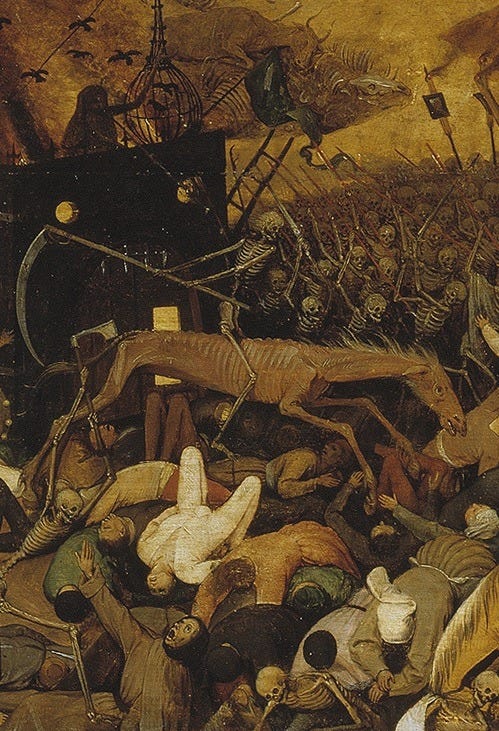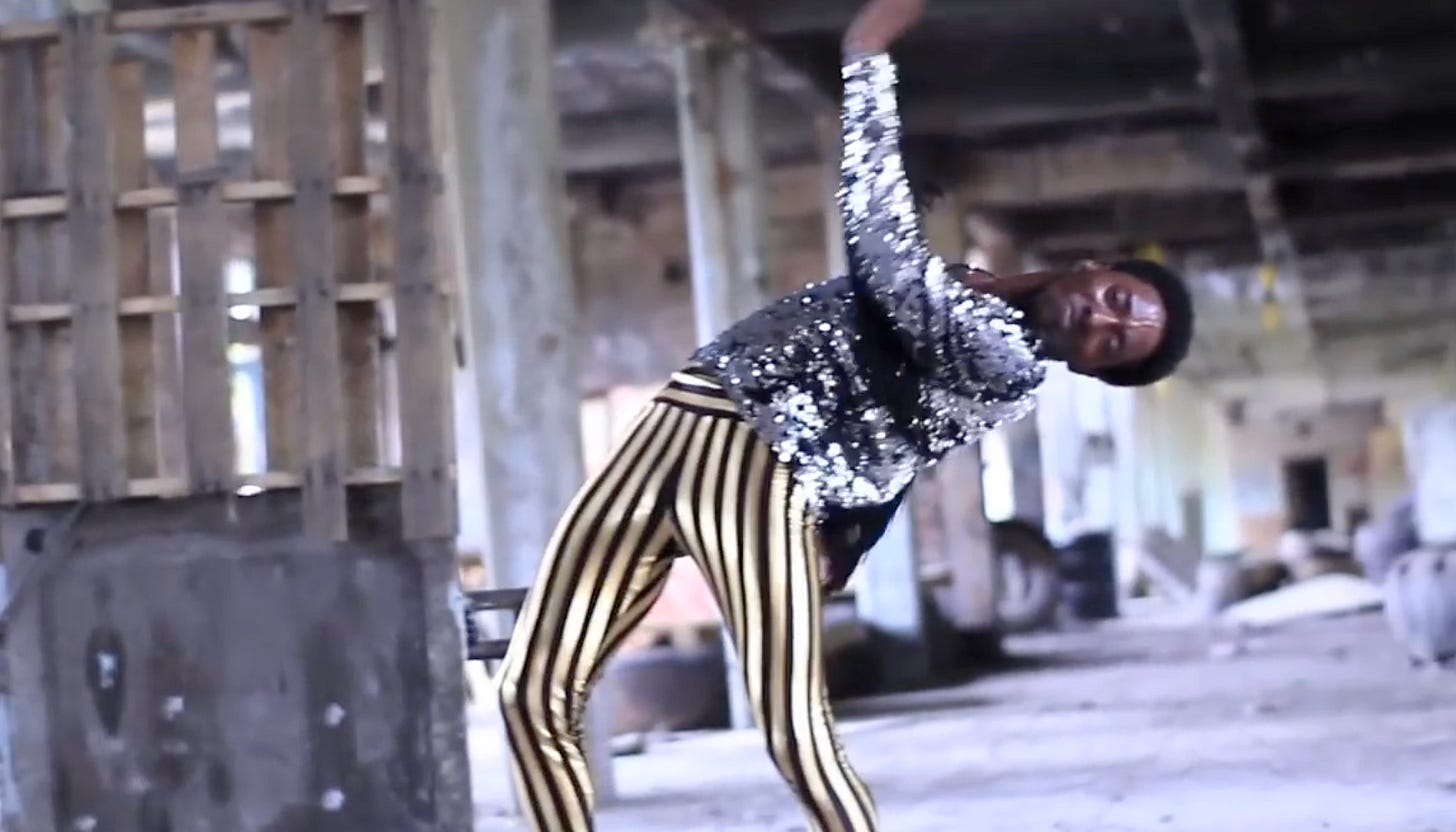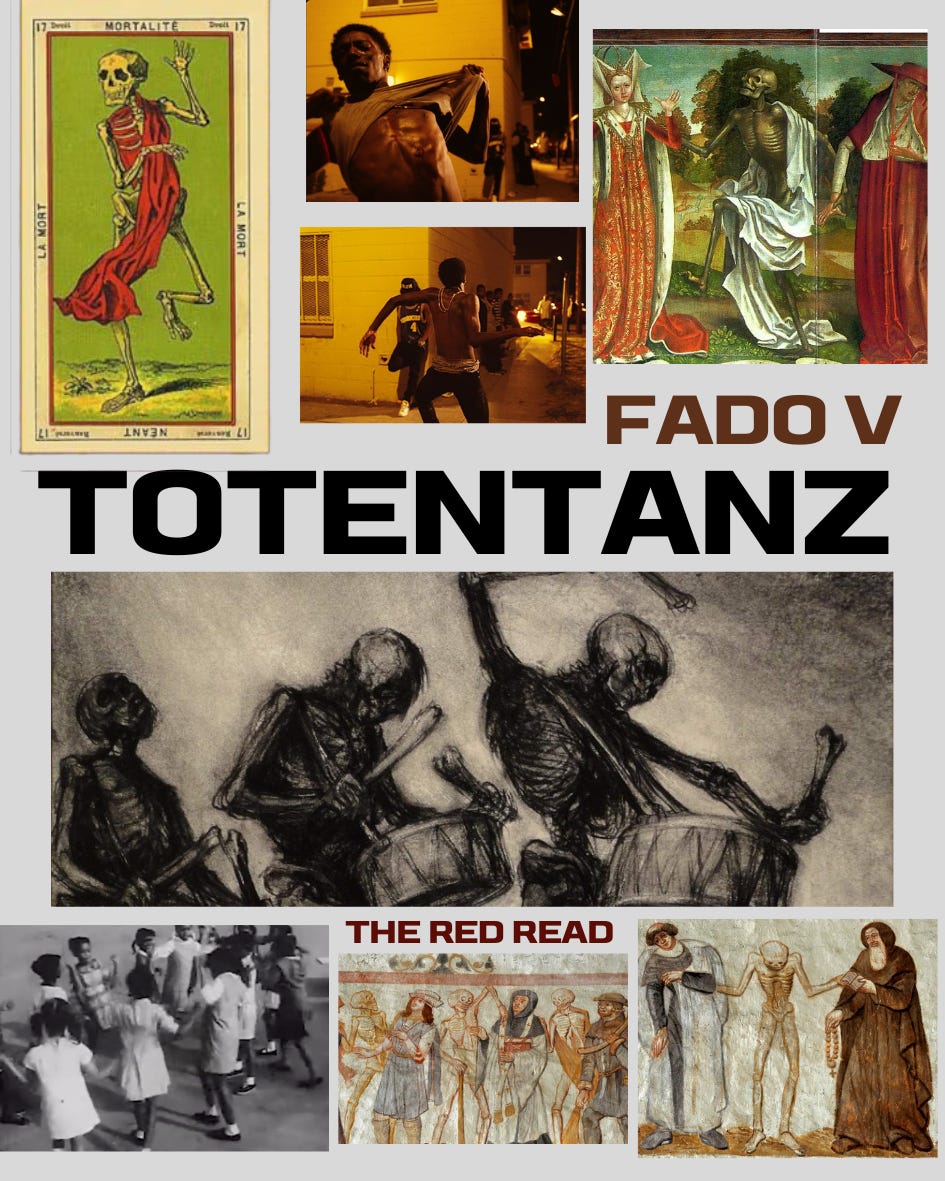It’s no surprise that Death is a legion. In many modern tarot decks you will see Death arriving on a horse. This visual trope appeared during the plague of the 14th century saying that apocalypse is an invasion.
Yet another motif emerges in the visual iconography of the harvester of souls; Death comes with an invitation. The Danse Macabre is one in which everyone is welcome. Dance puts a pulse to the Frankenstein motion of contorted dead bodies rising together in a conga line across the proverbial road into the afterlife. The undead dance in an uncanny perimortem movement. This dance extends centuries into the past with numerous, diverse iterations but surprisingly has maintained a relatively stable interpretation. As a memento mori, it reminds us that death is ever-present. But as these scenes are read they tend to rely on a hasty humanism that takes for granted a universal human subject.
FADO V will take its cue from Slyvia Wynter’s problematizing of “the human” and its lopsided notions of “human nature” and “human experience” which figures man as the supposed universal subject of philosophy. Blackness haunts the figure of “man,” and black death haunts the universalizing tropes of the danse macabre. Black social life is structured by the constant threat of death.
What does it mean to dance in the spaces where somebody has died? To dance in the streets, in the park, the parking lot, the club, the backyard becomes an ambivalent act that is less about the triumph of life than a séance, a resurrection.
To think about dance as a way of emotionally and kinetically moving with the dead proves an occasion to deepen the ontological considerations of actual dancers, like Storyboard P, a prominent Brooklyn-born street dancer whose masterful movement disrupts the body’s fluid motion with trembles and twitches. He flickers as a fleshy marvel. There’s a phenomenology to the pained / languorous, graceful / hobbled twitchy, glitchy body that Storyboard P performs. He remixes the violent muscles spasms of the colonized that Fanon famously reads into an aesthetic play of stop-motion animation. In the scholarship on danse macabre, the bodily aesthetic practice of dancing is rarely considered. Totentanz will move beyond thinking of the dance solely as metaphor by giving actual regard to an undead dancing that is realized in the flesh.
Death will always have a dancer partner, just as we all embody dead dancers. The separation between the living and the dead isn’t all that rigid so that the staccato rhythm of the revenant is a motion that reorients our notion of aesthetics via the re-animated and dancing black (un)dead. Totentanz will make us intimate with the dead, with all its macabre resonances. This sensual gesture presents ethical orientations toward aligning, defending, mourning the dead.
Totentanz will transform the aesthetic considerations of arcanum 13 so that anytime the card comes up we can care for our corpse across the threshold of social change with a rich reverence.
Curious about FADO & enrollment options?
As a reminder, there are two primary ways to participate in the full Fado container.
The first way is to enroll for the total course by setting up a payment plan (at $65 monthly rate vs the $80 stand-alone sign up rate) or invest in the total course tuition upfront. This will give you year-long access along with additional resources unique to students who enroll in the full course. Sign up and gain accesses to in-depth classes on The Tower, The Hanged Man, The Star and now Judgement.
The second option is to enroll via these individual substack class announcements. Students who sign up for any single class, w/o signing up for the full course, will maintain 2-week access to the class recording.
I’ll be here if you have any questions.
x,
Christopher








